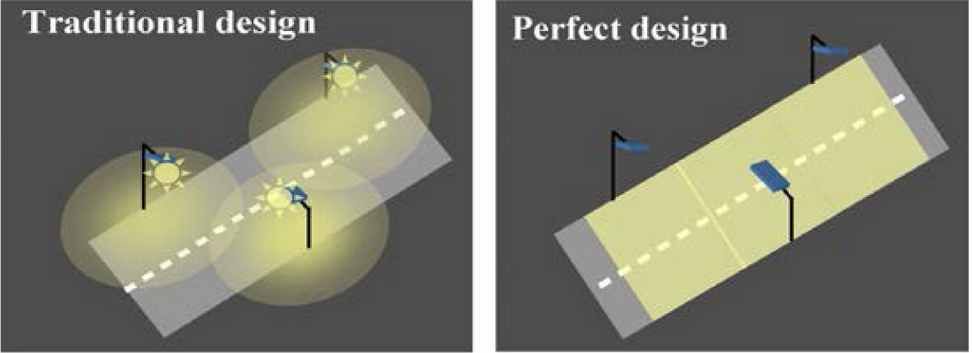New LED Street Light Design Could Eliminate Light Pollution
Current street light designs spreads light into unwanted directions which wastes energy and results to non-uniform light patterns, unnecessary upward-reflection, and glare (very uncomfortable for drivers). This inefficient use of lighting is called “Light Pollution” - term for misdirected artificial light. In some cases conventional street lights losses half its light due to concentrations going to horizontal and vertical directions.
A team of Japanese and Mexican researchers has come up with a simple yet effective solution. A new design for street lamps based on a three-part fixture, the goal is to maximize light distribution.
a cluster of LEDs with TIR lenses are put inside a reflective box, which is covered with a microlens sheet; the reflective cavity improves efficiency by light recycling; each TIR lens collimates the LED light for the microlens array; and the microlens sheet uniformly distributes light only into the street
The use of Total Internal Refection (TIR) lenses allows focused light in parallel rays. The LEDs mounted inside a reflective cavity maximizes light efficiency by keeping it from scattering unnecessarily. While the microlens sheet acts a diffuser reduces glare with uniform light distribution.
The key benefit of the LED street light design is uniform light distribution - which results to high-efficiency, anti-glare and eliminate light pollution. Several computer simulations has been done which includes light placements and tests with areas spreading over 10 meters (33 feet) from the street lights. Results are measured by Optical Utilization Factor (OUF) - relationship between the flow rate of light from the light source and the flow at the target area. The higher the OUF, means better efficiency and performance.
Results shows the new the design having an OUF of 51 to 81 percent. With this performance it uses 10-50 percent less energy than most efficient conventional street lamps with OUF of 45 percent.
A working prototype is yet to be created as the team continues to work to further perfect the street light design. But the team is expecting to build the first working prototype within the year, and hopefully actual street lights installation by the start of 2014.
source: optics express





Pingback: Types And Effects Of Water Pollution | Green Energy()